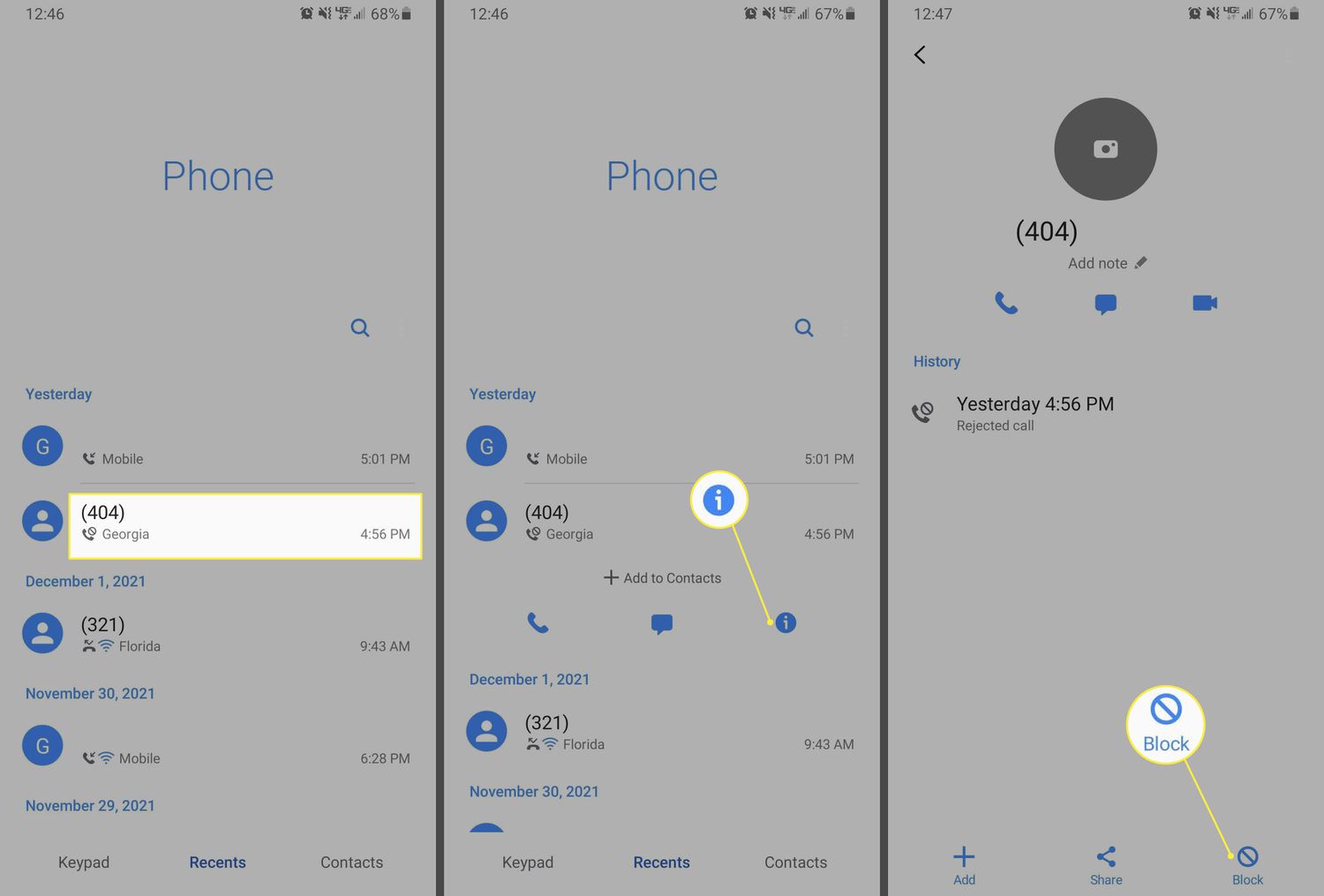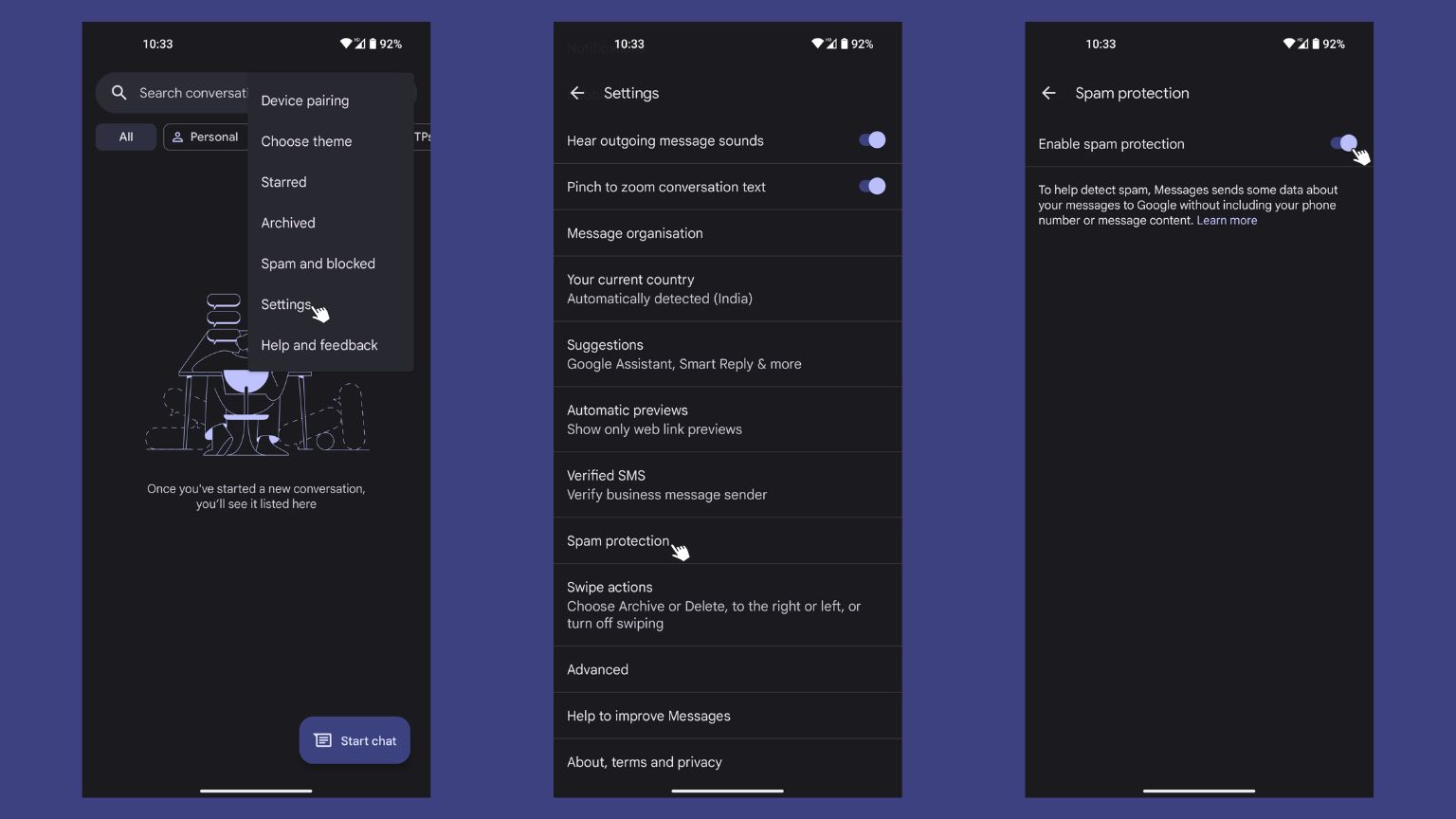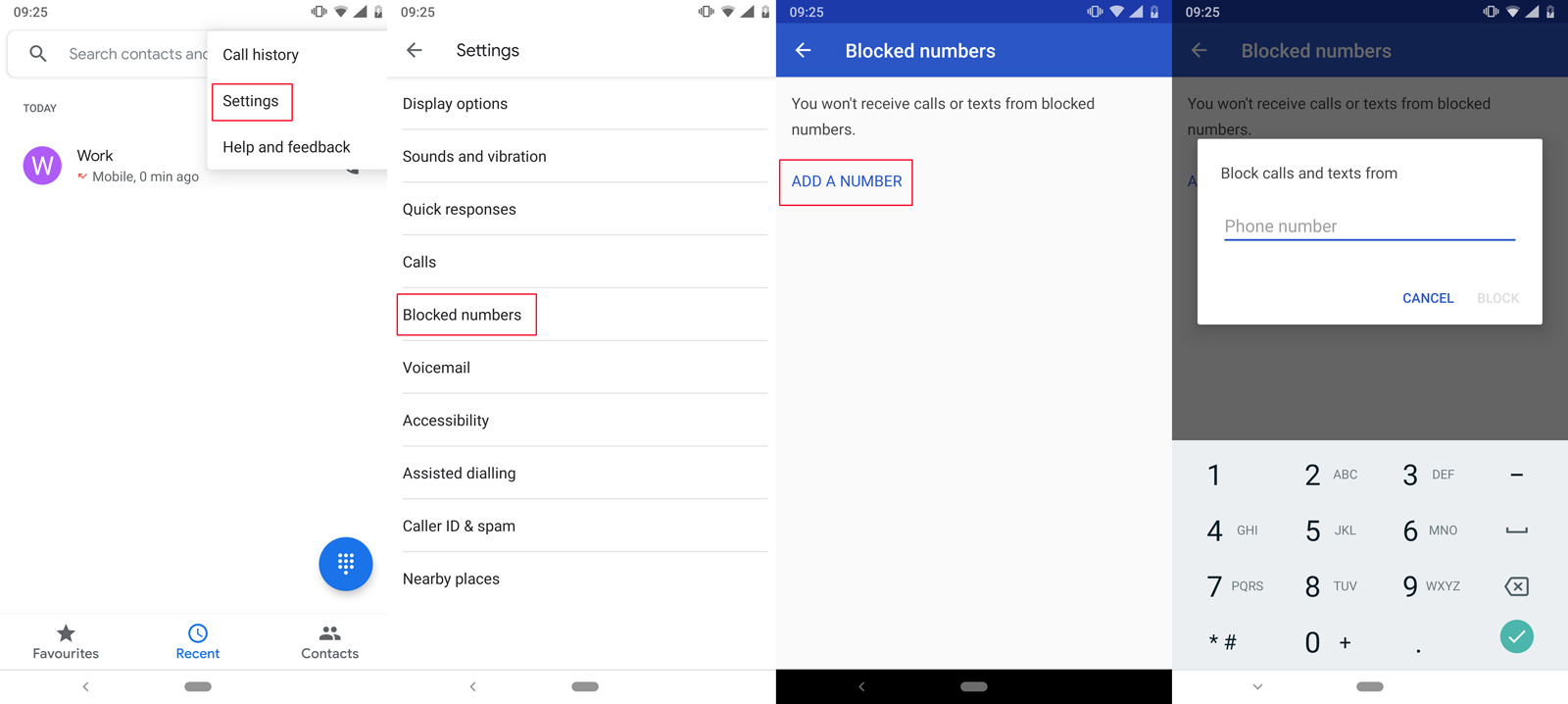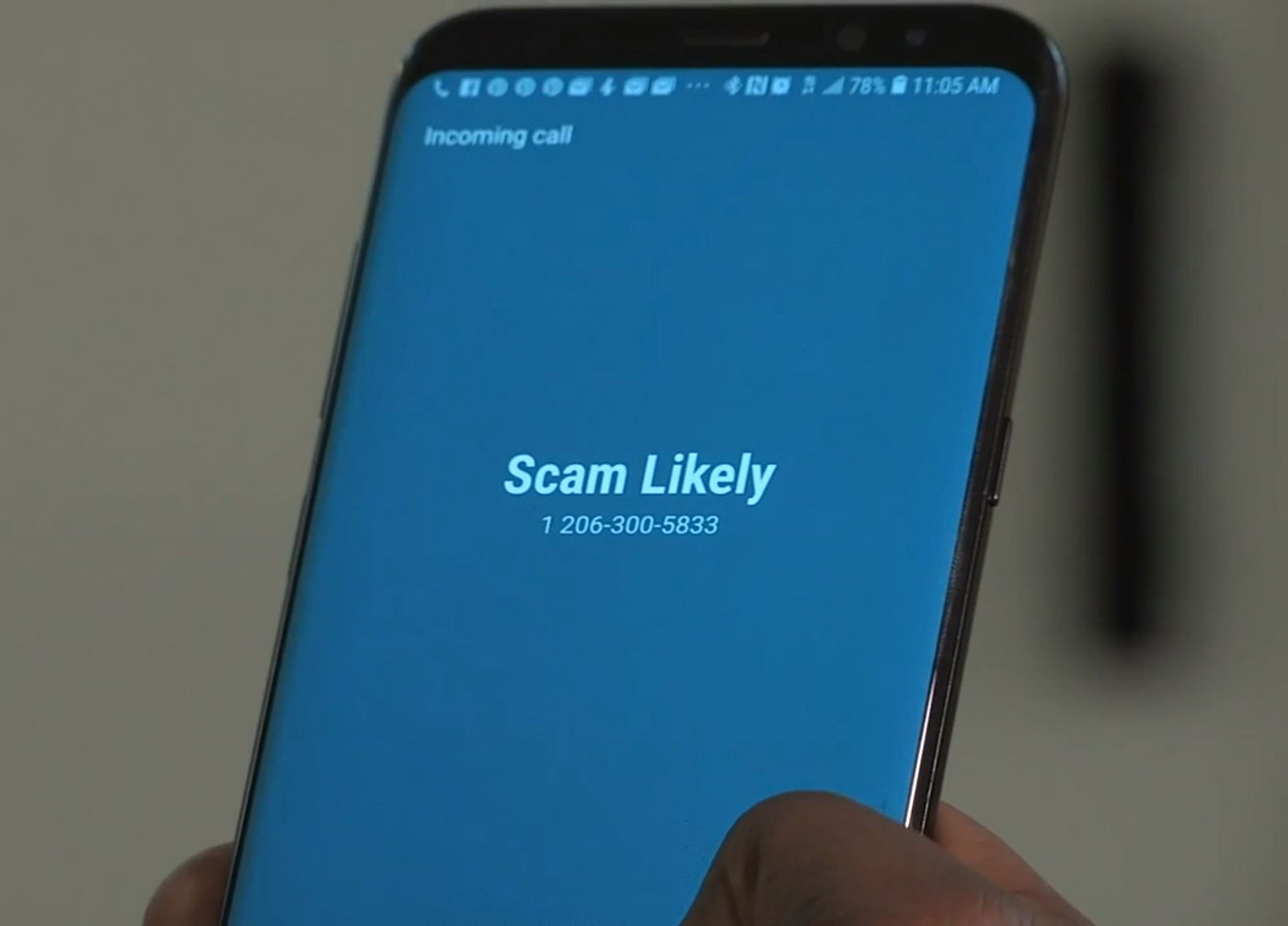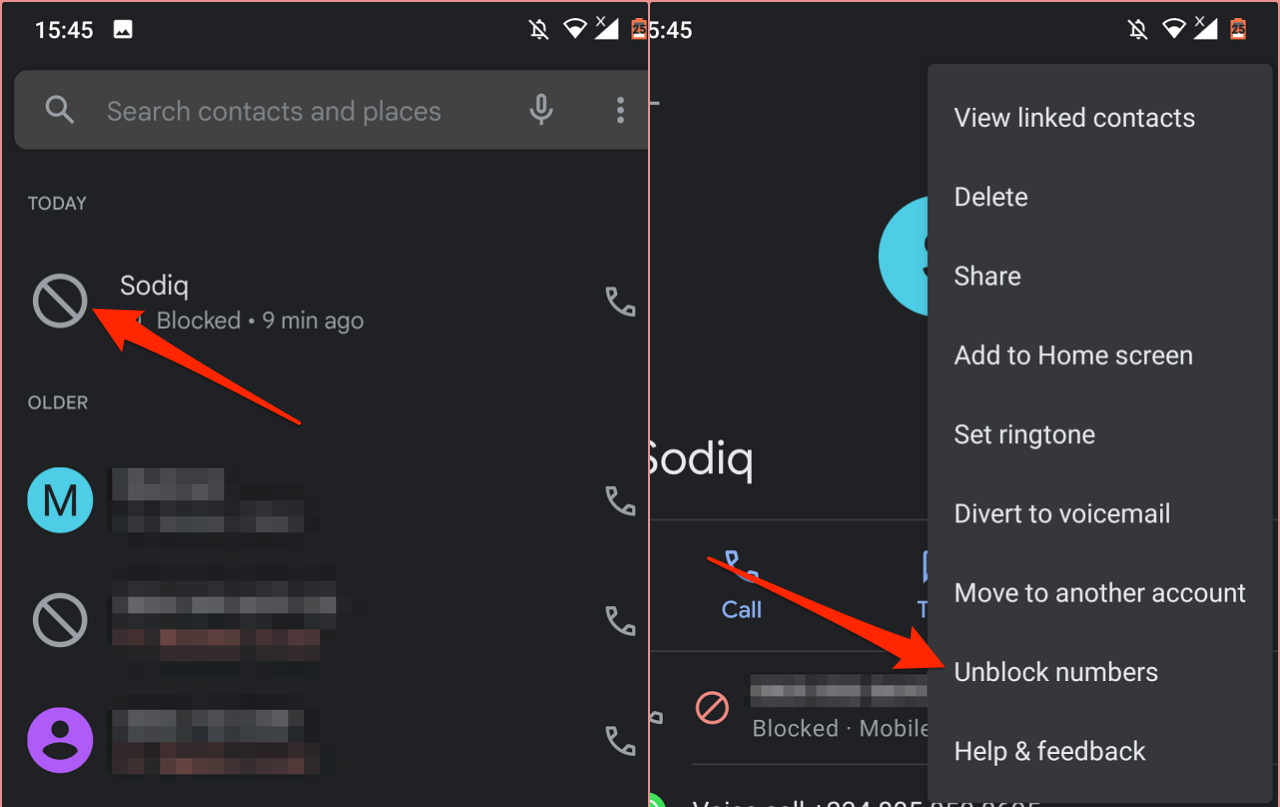Introduction
Is there anything more annoying than receiving unwanted spam calls on your Android device? We’ve all experienced the frustration of being interrupted by telemarketers or scammers trying to sell us something we don’t want or need. Fortunately, there are several effective methods to put a stop to these spam calls and regain control over your phone.
Spam calls can not only disrupt your daily routine but also pose a threat to your privacy and security. Scammers often use these calls to collect personal information or engage in fraudulent activities. Protecting yourself against such calls is essential in today’s digital age.
In this article, we will explore various techniques to help you stop spam calls on your Android device. Whether you want to use built-in features or rely on third-party apps, we have got you covered. By implementing these strategies, you’ll be able to reclaim your phone’s tranquility and peace of mind.
It’s important to note that the effectiveness of these methods may vary based on your Android device and operating system version. Additionally, keep in mind that some features mentioned may not be available on all devices. However, by combining these methods and finding the approach that works best for you, you can significantly reduce the number of unwanted calls you receive.
So, without further ado, let’s delve into the various techniques that can help you put an end to those annoying spam calls on your Android device.
Enable Call Blocking and Spam Protection
One of the first steps you can take to tackle spam calls on your Android device is to enable the built-in call blocking and spam protection features. Android has its own system-level call blocking functionality that can help filter out unwanted calls.
To enable call blocking and spam protection, follow these simple steps:
- Open the Phone app on your Android device.
- Tap the three-dot menu icon in the top-right corner of the screen.
- Select “Settings” from the drop-down menu.
- Look for the “Blocked numbers” or “Spam and Call Screen” option and tap on it.
- Toggle the switch to enable call blocking and spam protection.
Once enabled, your device will utilize a database of known spam numbers to automatically block or flag suspicious calls. Keep in mind that this feature may not catch all spam calls, as new numbers are constantly being used by scammers. However, it can significantly reduce the number of unwanted calls you receive.
Additionally, you can manually add specific numbers to your blocked list, ensuring that calls from those numbers are automatically rejected. This is especially useful if you consistently receive spam calls from the same numbers.
By enabling call blocking and spam protection, you empower your Android device to proactively filter out unwanted calls, providing you with a more peaceful and hassle-free calling experience.
Install a Third-Party Call Blocking App
If the built-in call blocking and spam protection features on your Android device are not sufficient, you can consider installing a third-party call blocking app. These apps offer more advanced features and customization options to effectively block spam calls.
There are numerous call blocking apps available on the Google Play Store, each with its own unique set of features and user interface. Here are some popular options you can explore:
- Truecaller: Truecaller is a widely-used call blocking app that not only blocks spam calls but also identifies unknown callers by displaying their names and other details. It has a large community database that helps identify and block spam callers effectively.
- Hiya: Hiya is another popular app that offers advanced spam detection and call blocking features. It can automatically block known spam numbers and provides real-time protection against fraudulent calls.
- Call Control: Call Control is a robust call blocking app that allows you to create your own blocklists and customize call blocking settings. It also offers a crowd-sourced spam directory to help identify and block unwanted calls.
To install a third-party call blocking app, follow these steps:
- Open the Google Play Store on your Android device.
- Search for the call blocking app of your choice.
- Select the app from the search results.
- Tap the “Install” button to download and install the app on your device.
- Once installed, open the app and follow the setup instructions to enable call blocking and spam protection.
By using a third-party call blocking app, you gain access to more advanced features and a larger database of known spam numbers. These apps often provide real-time updates and community-driven spam reporting, ensuring that you stay protected from the latest spam calls.
Use the Do Not Disturb Mode
Another effective method to minimize the disruption caused by spam calls on your Android device is to utilize the built-in Do Not Disturb (DND) mode. The DND mode allows you to silence calls and notifications during specific times or in certain situations, giving you uninterrupted peace.
To activate the Do Not Disturb mode and silence unwanted calls, follow these steps:
- Swipe down from the top of your screen to access the notification panel.
- Tap the Do Not Disturb icon or find the “Do Not Disturb” option in the settings menu.
- Choose the desired Do Not Disturb mode:
- Priority only: This mode allows calls and notifications from specific contacts or apps that you mark as important, while blocking all others.
- Alarms only: This mode silences all calls and notifications, except for alarms.
- Custom: This mode lets you customize various settings, such as allowing calls from specific contacts or allowing repeated calls to go through.
- Adjust the settings according to your preferences and requirements.
By enabling the Do Not Disturb mode, you can effectively silence spam calls and minimize the disturbances caused by unwanted callers. This feature is particularly useful during your work hours, meetings, or when you simply want some uninterrupted downtime.
It’s worth noting that while the Do Not Disturb mode can help reduce the annoyance of spam calls, it might also affect the reception of legitimate calls. Therefore, make sure to customize the settings accordingly and add essential contacts to the priority list to ensure important calls can still get through.
Utilizing the Do Not Disturb mode provides you with the flexibility to control when and how you receive calls, ultimately giving you a more peaceful and uninterrupted smartphone experience.
Silence Unknown Callers
If you frequently receive spam calls from unknown or unrecognized numbers, a helpful feature available on some Android devices is the ability to silence calls from unknown callers. By enabling this feature, you can automatically send calls from unknown numbers to voicemail, avoiding interruptions from potential spam calls.
To silence unknown callers on your Android device, follow these steps:
- Open the Phone app on your Android device.
- Tap the three-dot menu icon in the top-right corner of the screen.
- Select “Settings” from the drop-down menu.
- Look for the “Block numbers” or “Spam and Call Screen” option and tap on it.
- Toggle the switch to enable the “Silence unknown callers” feature.
Once activated, calls from numbers that are not in your contacts or recent outgoing calls will be silenced and sent to voicemail. This can be an effective way to avoid spam calls from unknown sources altogether, as most legitimate callers will leave a message if the call is important.
It’s important to note that this feature may not be available on all Android devices or may be located in slightly different settings menus depending on the device’s manufacturer or operating system version. However, if your device supports it, enabling the “Silence unknown callers” feature can significantly reduce the number of spam calls that reach your phone.
By utilizing this functionality, you can regain control over your incoming calls and silence potential spam callers, allowing you to focus on the calls that matter.
Report and Block Spam Numbers
When you encounter a spam call, it’s important to take action and report the number to help prevent others from falling victim to the same scam or nuisance. Most Android devices provide the option to report and block spam numbers directly from the Phone app.
To report and block spam numbers on your Android device, follow these steps:
- Open the Phone app on your Android device.
- Go to your call history or recents tab.
- Find the spam call from the number you want to report and block.
- Tap on the number to view the call details.
- Look for the “Block” or “Report” option and tap on it.
- Follow the prompts to either block the number or report it as spam.
By reporting spam numbers, you contribute to the collective effort of identifying and blocking nuisance callers. This information helps create a database of known spam numbers that is used by various call blocking services and apps.
Additionally, by blocking reported spam numbers, you ensure that future calls from those numbers will be automatically rejected or sent to voicemail. This helps protect you from continued harassment by persistent spam callers.
It’s worth mentioning that while reporting and blocking spam numbers is a proactive step, it’s important to remain vigilant as scammers frequently use different spoofed numbers. Therefore, it’s recommended to report any new spam numbers that you encounter to help keep the database updated.
By actively participating in reporting and blocking spam numbers, you contribute to a safer and more secure calling environment, not only for yourself but also for other Android users.
Be Cautious when Sharing Your Phone Number
One of the most effective ways to prevent spam calls on your Android device is to be cautious when sharing your phone number. The more you limit the exposure of your number, the less likely it is to fall into the hands of spammers and telemarketers.
Here are some tips to help you protect your phone number:
- Be selective with whom you share your number: Only provide your phone number to trusted individuals and reputable organizations. Avoid giving out your number to unknown or suspicious sources.
- Think twice before posting your number online: Be cautious when sharing your phone number on social media platforms, online forums, or websites. These public platforms can make your number more accessible to spammers and scammers.
- Opt out of unnecessary services: When signing up for online services, be wary of providing your phone number unless it is absolutely necessary. Many services may use your number for marketing purposes or sell it to third-party companies.
- Avoid entering phone number giveaways or contests: Some marketing campaigns and giveaways may require you to provide your phone number for participation. Consider the credibility of the promotion and the privacy policy before sharing your number.
- Read privacy policies: Before giving your phone number to any organization or website, take the time to review their privacy policy and understand how they handle and protect your data.
By adopting these practices, you can reduce the chances of your phone number getting into the wrong hands and minimize the risk of receiving spam calls.
However, even with these precautions, it’s important to note that determined spammers and scammers may still find ways to obtain your number. Therefore, it’s crucial to implement additional measures, such as call blocking and spam protection, to safeguard your device against unwanted calls.
Remember, taking proactive steps to limit the exposure of your phone number can go a long way in preventing spam calls and protecting your privacy.
Register Your Number on the National Do Not Call Registry
To further protect yourself from unwanted telemarketing calls and reduce the chances of receiving spam calls on your Android device, consider registering your phone number on the National Do Not Call Registry. This free service allows you to opt out of receiving telemarketing calls from legitimate companies.
The National Do Not Call Registry is a government-operated initiative in many countries that prohibits telemarketers from contacting registered phone numbers. By adding your number to this registry, you can significantly reduce the number of unsolicited calls you receive.
Here’s how you can register your number on the National Do Not Call Registry:
- Visit the official website of the National Do Not Call Registry for your country.
- Navigate to the registration page.
- Enter your phone number and email address.
- Follow the instructions to verify your registration by confirming the email sent to you.
- Once verified, your number will be added to the registry, and telemarketers are legally required to refrain from contacting you.
It’s important to note that while registering on the National Do Not Call Registry helps reduce calls from legitimate telemarketers, it may not completely eliminate spam calls from scammers. Illegitimate organizations and overseas callers may still attempt to contact you, so it’s crucial to remain cautious and employ other anti-spam measures.
By registering your number on the National Do Not Call Registry, you take a proactive step in minimizing unwanted telemarketing calls and creating a more peaceful phone experience.
Check App Permissions and Privacy Settings
When it comes to preventing spam calls and protecting your privacy on your Android device, it’s essential to pay attention to the app permissions and privacy settings of the applications you have installed. Taking control of these settings can help you safeguard your personal information and reduce the likelihood of receiving spam calls.
Here are some tips to help you manage app permissions and privacy settings:
- Review app permissions: Regularly review the permissions granted to each app on your device. Some apps may request access to your contacts, call logs, or other identifying information. Only grant permissions that are necessary for the app’s functionality.
- Limit background activity: Restrict apps from running in the background unnecessarily. Some apps may utilize your device’s resources to make or receive calls, potentially opening the door to spam calls. By limiting background activity, you reduce the chances of apps being used for malicious purposes.
- Disable unnecessary features: Disable features and services on your Android device that are not essential and may potentially expose your phone number to spammers. For example, turn off features like Wi-Fi calling or internet calling if you don’t require them.
- Manage app permissions individually: Instead of granting all permissions to an app by default, manage and approve permissions on a case-by-case basis. This way, you have more control over the information accessed by each app.
- Regularly update apps: Keep your apps up to date with the latest versions available. App developers often release updates to address security vulnerabilities and enhance privacy protections.
By taking the time to review app permissions and adjust privacy settings, you can mitigate the risk of your personal information being misused or exploited, which can help prevent spam calls.
Remember, staying proactive and vigilant about managing app permissions and privacy settings is crucial in maintaining the integrity of your personal data and reducing the likelihood of spam calls reaching your Android device.
Avoid Answering Suspicious Calls
When it comes to dealing with spam calls on your Android device, one of the simplest yet effective strategies is to avoid answering suspicious calls in the first place. By exercising caution and not engaging with unknown or suspicious callers, you can protect yourself from potential scams and unwanted solicitations.
Here are some tips to help you avoid answering suspicious calls:
- Don’t answer calls from unknown numbers: If you receive a call from a number you don’t recognize, let it go to voicemail. Legitimate callers will often leave a message if the call is important.
- Be wary of urgent or threatening messages: Scammers may try to create a sense of urgency or alarm through voicemail or text messages. Be cautious of messages demanding immediate action or threatening consequences.
- Verify caller identity: If you do answer a call from an unknown or suspicious number, avoid providing any personal or financial information. Instead, ask for the caller’s information and verify their identity independently before providing any sensitive details.
- Avoid interacting with automated messages: Some spam calls use automated voice recordings or interactive prompts to collect personal information. Refrain from interacting with these messages or providing any information.
- Trust your instincts: If something feels off about a call, trust your gut instincts. If it seems too good to be true or feels like a potential scam, it’s better to err on the side of caution and avoid engaging with the caller.
Remember, scammers and telemarketers often rely on individuals answering their calls to carry out their intentions. By avoiding suspicious calls and not providing them with the opportunity to interact with you, you can reduce your exposure to potential spam and fraud.
Keep in mind that while avoiding suspicious calls is an effective strategy, it’s still important to implement other measures, such as call blocking and spam protection, to fully protect yourself against spam calls on your Android device.
Use the Built-In Spam Call Detection Feature (if available)
If you’re looking for an extra layer of protection against spam calls on your Android device, consider utilizing the built-in spam call detection feature (if available). Many Android devices now offer this feature as part of their phone app, helping you identify and avoid incoming spam calls.
The built-in spam call detection feature uses a combination of algorithms, community feedback, and machine learning to analyze incoming calls and determine the likelihood of them being spam. When a potential spam call is detected, your device will display a warning or indicator, allowing you to make an informed decision on whether to answer the call or let it go to voicemail.
To enable and use the built-in spam call detection feature on your Android device, follow these steps:
- Open the Phone app on your Android device.
- Tap the three-dot menu icon in the top-right corner of the screen.
- Select “Settings” or “Call settings” from the drop-down menu.
- Look for the “Caller ID & spam” or “Spam and Call Screen” option and tap on it.
- Toggle the switch to enable the spam call detection feature.
- Once enabled, your device will actively analyze incoming calls and display a warning if it detects a potential spam call.
By using the built-in spam call detection feature, you can have an added layer of protection against spam calls without the need for third-party apps or services. This feature makes it easier to identify and avoid potential spam callers, allowing you to have more control over the calls you receive.
Keep in mind that the effectiveness of the spam call detection feature may vary depending on factors such as your device model and the accuracy of the spam call database. However, when combined with other anti-spam measures, it can significantly reduce the number of unwanted calls reaching your Android device.
By leveraging the built-in spam call detection feature, you can enhance your ability to differentiate between legitimate calls and potential spam, thereby minimizing interruptions and protecting your privacy.
Conclusion
Spam calls can be a frustrating and intrusive experience, but with the right strategies in place, you can regain control over your Android device and minimize the disruption caused by these unwanted calls.
In this article, we explored ten effective methods to stop spam calls on your Android device. From enabling call blocking and spam protection to registering on the National Do Not Call Registry, each technique offers a unique approach to address the issue.
By enabling call blocking and spam protection or installing a third-party call blocking app, you can rely on technology to filter out unwanted calls and identify potential spam numbers. Utilizing features such as the Do Not Disturb mode and silencing unknown callers allows you to customize your call settings and minimize interruptions from suspicious numbers.
Additionally, taking proactive steps to protect your privacy, such as being cautious when sharing your phone number and managing app permissions, helps reduce the chances of falling victim to spam calls. Reporting and blocking spam numbers, as well as avoiding answering suspicious calls, empower you to take control and prevent further harassment.
Remember, no single method can guarantee complete elimination of spam calls, as scammers constantly adapt and find new ways to reach their targets. It is crucial to combine multiple strategies and remain vigilant in order to effectively combat spam calls on your Android device.
By implementing these techniques, you can create a more peaceful and secure calling experience. Stay proactive and regularly review your settings to ensure optimal protection against spam calls. With these measures in place, you can reclaim your phone’s tranquility and privacy, focusing on the calls that truly matter.







